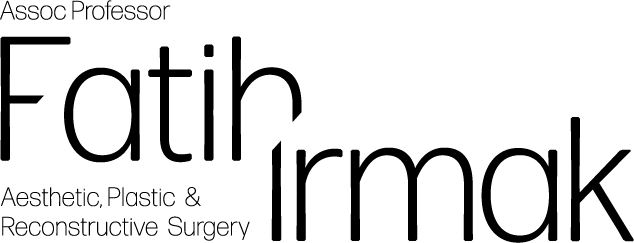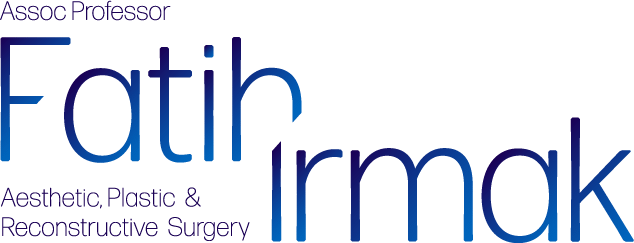Plastic Surgery from the Perspective of Psychiatry
In the case of the "elephant man" in the case examples of the Diagnostic and Statistical Manual of Mental Disorders, just this part of the conversation between the patient and the psychiatrist shows us how distorted the patient's perception of his or her own body is. It is easy to diagnose such patients when they present to a psychiatrist because of the obvious disturbance in their thoughts, feelings and body image. But the problem is the symptomatic treatment these patients receive in the clinics they go to from the onset of the illness until they consult a psychiatrist.
While psychiatrically reconstructive interventions almost always have a positive impact on a person's mental health, plastic surgery Caution should be exercised in reconstructive or cosmetic surgery procedures, especially because of psychiatric complications. Reconstructive interventions to correct changes in body appearance resulting from congenital or acquired physical deformities, trauma-related injuries, burns, tumors and many similar inherited medical diseases or treatment methods have been noted to positively affect self-confidence, body image perception, interpersonal and social interactions. In general, reconstructive interventions are supportive of mental health. It positively affects mood, satisfaction with one's own body and social functions.
Patients presenting to plastic surgery are dissatisfied with their appearance. In general, these people have a normal physical appearance and do not have significant structural or functional disorders. Cosmetic surgery is performed to reduce the dissatisfaction with one's physical appearance. However, this dissatisfaction can range from a normal level of concern to a disease level of concern. The patient who wants aesthetic intervention (and perhaps the surgeon who will perform the intervention) thinks that with the physical change, not only the external appearance will change, but also their thoughts and feelings about their body will change. The expected changes include being more satisfied with one's appearance, increasing self-confidence and thinking more positively about oneself. Because if one's perception of one's appearance is different from one's preferred body image, this will cause a conflict. Plastic surgery It can be considered almost like a psychological treatment, as it reduces or even eliminates this difference. Perhaps this is why it is so important for psychiatrists and psychologists plastic surgery It has generated more interest than other surgeries, even reconstructive surgery.
Plastic surgery The first literature on psychological evaluation in patients with mental illness dates back to the late 1940s. While some of the cases were psychologically normal, others were emotionally pathologic. This shows us that there is a dimension ranging from normal to pathological in the perception of their bodies. Plastic surgery It has been reported that psychiatrists found a high rate of psychopathology in psychiatric examinations, but a lower rate of psychological disorders when standardized tests were applied. Although this is difficult to explain, Sarwer emphasized that body image may be a better explanation for body perception disorder. Body image is a multidimensional concept that includes perceptions, thoughts and feelings about the body and it has been shown that it can be measured clinically with the "Multidimensional Body-Self Relations Questi-onaire" (MBSRQ). In our country, there are two tests with validity and reliability (Body Perception Scale and Body Image Satisfaction Scale).
If a person who wants cosmetic intervention has a body image disorder, since the psychological problem cannot be solved by surgery, compliance cannot be achieved despite surgical intervention, dissatisfaction persists; even surgical intervention may result in psychiatric complications. Preoperative period plastic surgeon and psychiatry collaboration has almost always led to better treatment outcomes. This is because
schizophrenic disorder
paranoid disorder
obsessive-compulsive disorder,
major depressive disorder,
body dysmorphic disorder,
Hypocondi
"polysurgery syndrome"
personality disorders
such as organic mental disorders
In psychiatric cases, surgical intervention is not appropriate and psychiatry is the treatment priority. Even in cases where it has not been decided whether there is a mental disorder or not, it is recommended that the patient be re-evaluated after a period of psychiatric treatment.
In psychotic patients with schizophrenic disorder or paranoid disorder, surgical intervention is contraindicated if there is a belief in ugliness or a delusional thought disorder about body organs. While these patients are often referred to a psychiatrist by the surgeon due to other symptoms of the disease in the preoperative period, body dysmorphic disorder is a more important problem for plastic surgery. Because individuals with body dysmorphic disorder have serious anxiety about their bodies and demand repeated surgical intervention. Other symptoms of the disease can only be detected through a careful psychological examination or specific tests for body image. This is because these patients may hide their thoughts behind their symptoms. In addition, since depression is the most common psychiatric condition associated with this disease, the primary disease can often be overlooked.
The main feature of body dysmorphic disorder (dysmorphophobia) as defined in the DSM-IV is a preoccupation with a defect in appearance. Even if this defect is entirely imaginary or a minor physical anomaly is present, the person's preoccupation with it is markedly excessive. This preoccupation causes clinically significant distress or impairment in social, occupational or other important areas of functioning. This preoccupation is not better explained by another mental disorder (e.g. the distaste for body shape and size in anorexia nervosa). In these patients, every part of the body may be the subject of concern, but the focus is on the head and face. Facial acne, age-related wrinkles, scars, skin color changes, asymmetry are the most common symptoms. All facial organs such as the nose, eyes, eyelids, eyebrows, ears, mouth, lips, teeth and jaw can be involved. Sometimes these complaints can be vague, such as "a drooping face" or "eyes that are not hard enough". The person experiences significant distress because of these defects. It is as if they interpret their appearance as the cause of failure or despair in their life. Thinking about their imperfections takes hours and even dominates their whole life. As a result, functioning is significantly impaired in many areas. Shyness and timidity due to their imperfections may lead them to avoid work or situations where they have to participate in society.
As the disease progresses, the distress and dysfunction accompanying the symptoms increase, the number of friends, especially with the opposite sex, decreases, and marital problems arise. A 26-year-old female patient, a university graduate, expressed her thoughts on marriage as follows: It is a very sacred institution and necessary. I made attempts when I was a student, but never now! Because I am the ugliest person in the world with pimples on my back..." Patients may at times become so intense in thought and distress that they are hospitalized or even suicidal (as in the case of the elephant man). Patients may use special lights or magnifying glasses to better examine their defects, or they may try to hide them. For example, they may grow a beard to cover an imaginary scar on the face, wear excessive makeup or a hat to hide imaginary hair loss.
The prevalence of body dysmorphic disorder in plastic surgery patients was given as %2 in an incomplete prevalence study, while another study reported that 7 out of 100 plastic surgery patients were diagnosed with body dysmorphic disorder, which constitutes a potential psychiatric contraindication for surgery.
In body dysmorphic disorder, although there is a marked disturbance in body image, patients are often not referred to psychiatry. plastic surgerydermatologists, dermatologists, otolaryngologists, internists. They seek medical and even surgical treatments to correct their imaginary defects. These treatments may worsen the disease. This is because the treating physician thus supports the patient's pathological thinking. This support further intensifies the symptom or leads to new struggles. As a result, more unsuccessful attempts may be made and the patient may end up with "artificial" noses and ears that he or she still does not like and cannot live with. In a patient with body dysmorphic disorder who comes to a plastic surgeon for a surgical intervention, even if the desired intervention is very simple and minor, the patient should be emphasized that the main pathology is in the thought system, not the appearance, and surgical intervention should be recommended after cooperation with psychiatry. Unlike the usual concerns about appearance in body dysmorphic disorder, this endeavor causes excessive time expenditure, significant distress and deterioration in social relations.
In body dysmorphic disorder, the disturbance in the thought system can range from obsessions to delusions. Compulsive (repetitive) behaviors such as frequent mirror gazing and ritualistic make-up application are also common in patients. However, in obsessive-compulsive disorder, obsessions or compulsions are not limited to concerns about appearance and are not related to a single organ as in body dysmorphic disorder.
Individuals with avoidant personality disorder or social phobia may feel sad because they are ashamed of real imperfections in their appearance, but they have a fear of humiliation in front of others rather than an imagined or exaggerated preoccupation with body imperfections.
Recurrent surgical interventions are common in sadomasochistic personality disorder. There may be referral to general surgery, plastic and reconstructive surgery especially due to automutilation behavior.
In depressive disorders, somatic complaints may be present due to excessive interest in the body. A depressed patient with a marked depressed mood may consult plastic surgery with the perception that he/she is ugly and has a physical disorder. Or there may be delusions about body organs as in Cotard syndrome. Depressive mood, investigation of the reason why she/he prefers surgery and absence of pathology in her/his appearance plastic surgeon are important points.
Another important group that should be evaluated and referred to plastic surgery in terms of psychiatry is adolescents. Depersonalization (a disorder of perception of one's own body. For example, feeling that the nose is bigger, not perceiving the hand as one's own organ, looking at the body as if it were an outsider...) may be a normal symptom in this period, but it may also be the first symptom of a psychotic picture that may occur in the future. Depersonalization has also been reported in depression, dissociative conditions, schizoid personality disorder, schizophrenia, temporal lobe epilepsy and fatigue. During adolescence, aesthetic interventions especially on the nose, ears and chin should be evaluated in terms of depersonalization.
Plastic surgery The liaison between reconstructive surgery and psychiatry should start in the preoperative period. This will identify cases that are psychiatrically unsuitable for the operation. In addition, this cooperation is also important in terms of psychological preparation of the person to receive anesthesia, to have an intervention performed on his/her body and psychosocial support after the operation. After a disfiguring surgery, the person's acceptance of the new organ both physically and mentally requires a psychological process.
In order to avoid or minimize psychiatric complications in the postoperative period, it is appropriate to evaluate the patient's expectations in the preoperative period, how he/she perceives his/her own body, whether it is his/her own free decision, whether he/she knows the risks and complications of the surgical intervention, what is the thought under his/her behavior and demand, whether he/she has any psychiatric disorder before, whether he/she has a perfectionist structure, whether he/she has excessive anxiety despite having minimal deformity, and if necessary, to cooperate with the psychiatrist. The patient may not be satisfied with this cooperation and may even refuse. In such cases, it should be explained to the patient that the purpose of this consultation is to guide the treatment, not to make the patient accept the deformity.



